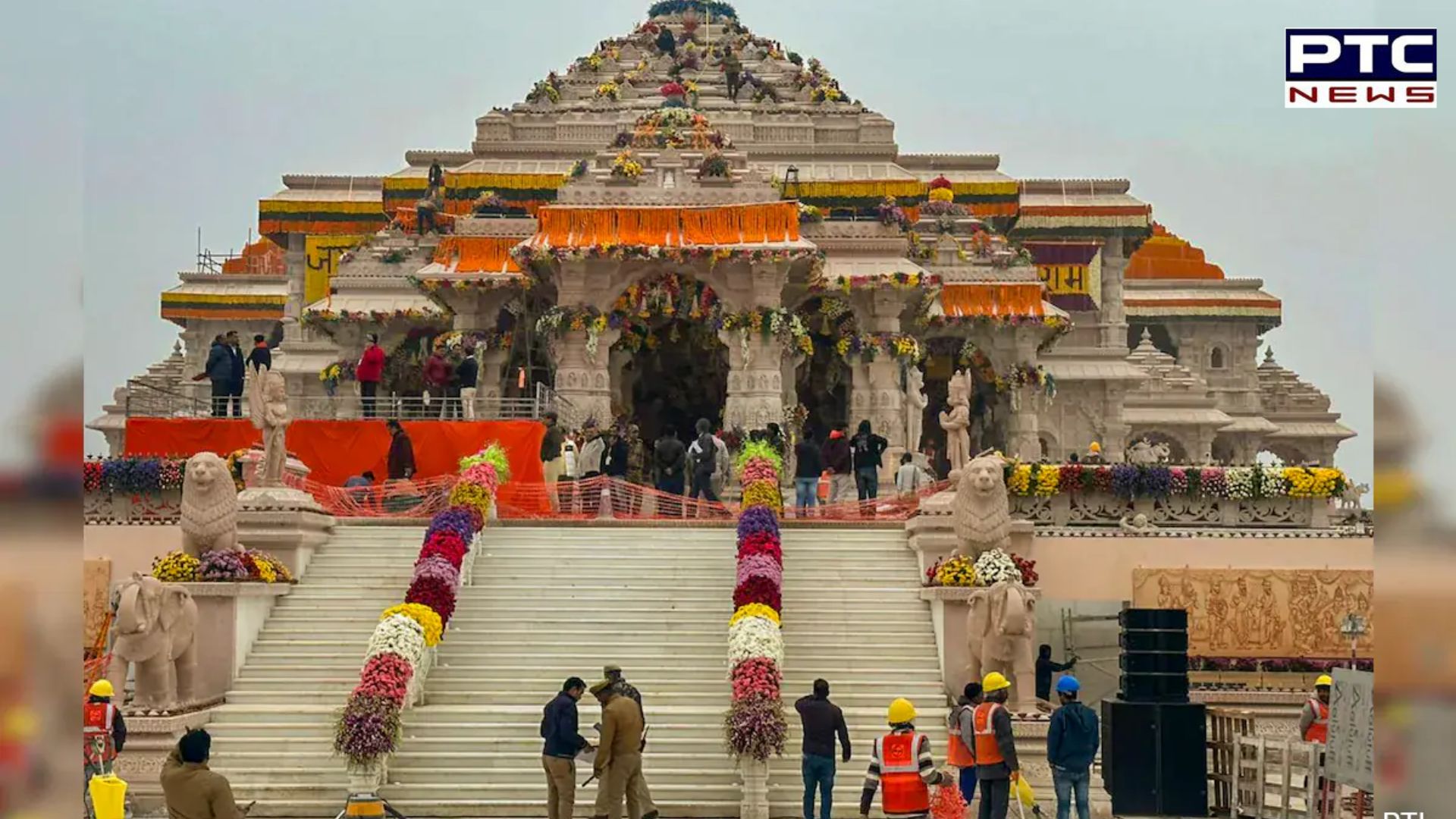

Ayodhya Ram temple: Significance, architectural details and more...
PTC Web Desk: The grand inauguration ceremony of the Ram Temple in Ayodhya took place on Monday with Prime Minister Narendra Modi and various dignitaries in attendance. The event was broadcast live in several cities, and devotees were encouraged to virtually participate. Following the consecration ceremony, the temple will open its doors to devotees starting January 23.
Resolving a century-old dispute, a five-judge Bench led by then Chief Justice of India Ranjan Gogoi on November 9, 2019, cleared the way for the Ram temple's construction, along with allocating an alternative five-acre plot for a mosque in the holy town of Uttar Pradesh.
After the completion of the Pran Pratishtha ceremony, let's delve into noteworthy details about the Ram temple
Ayodhya is considered one of the most revered pilgrimage sites for Hindus, being recognised as the birthplace of Lord Ram. On August 5, 2020, Prime Minister Narendra Modi had laid the foundation stone for the Ram temple. The affairs of the temple are overseen by the Shri Ram Janmabhoomi Teerth Kshetra, a Trust created by the Central Government following the Supreme Court's directives. The temple, spanning 2.7 acres, is constructed in the traditional Nagar style.
According to the Shri Ram Janmabhoomi Teerth Kshetra, the temple boasts a length of 380 feet, a width of 250 feet, and a height of 161 feet. It is three-storied, with each floor measuring 20 feet in height. The temple comprises 392 pillars, 44 doors, and features five Mandaps or halls, including Nritya Mandap, Rang Mandap, Sabha Mandap, Prarthna, and Kirtan Mandaps. Devotees enter from the east through the Singh Dwar, with provisions for ramps and lifts for the differently-abled and elderly. Notably, the temple claims to use no iron in its construction.
/ptc-news/media/media_files/7nXGK9tA4C1vdgllV4ZT.jpeg)
The compound includes four temples at its corners dedicated to the Sun god, goddess Bhagwati, Lord Ganesha, and Lord Shiva. Maa Annapurna's temple is on the northern side, and a Hanuman temple is on the southern side. The foundation is constructed with a 14-metre-thick layer of roller-compacted concrete (RCC), giving it the appearance of artificial rock. A 21-foot-high plinth made of granite is erected for protection against ground moisture.
The Ayodhya ram temple is built entirely using indigenous technology, with a focus on environmental water conservation. The estimated cost of the Ram temple's construction was Rs 1,800 crore, as projected by the Shri Ram Janmabhoomi Teerth Kshetra in 2022. A PTI report from October last year indicated that Rs 900 crore had been spent on construction between February 5, 2020, and March 31, 2023.
Also Read | From construction of Babri Masjid in 1528 to Ram Temple opening in 2024 | A Chapter Concluded
Also Read | Arun Yogiraj, artisan behind Ram Lalla idol, says, 'I feel like I am in a dream world'
Also Read | Ram Temple consecration: Celebrity glitter at grand event | Watch
Also Read | Ram temple: Key quotes from PM Modi's speech in Ayodhya
-
